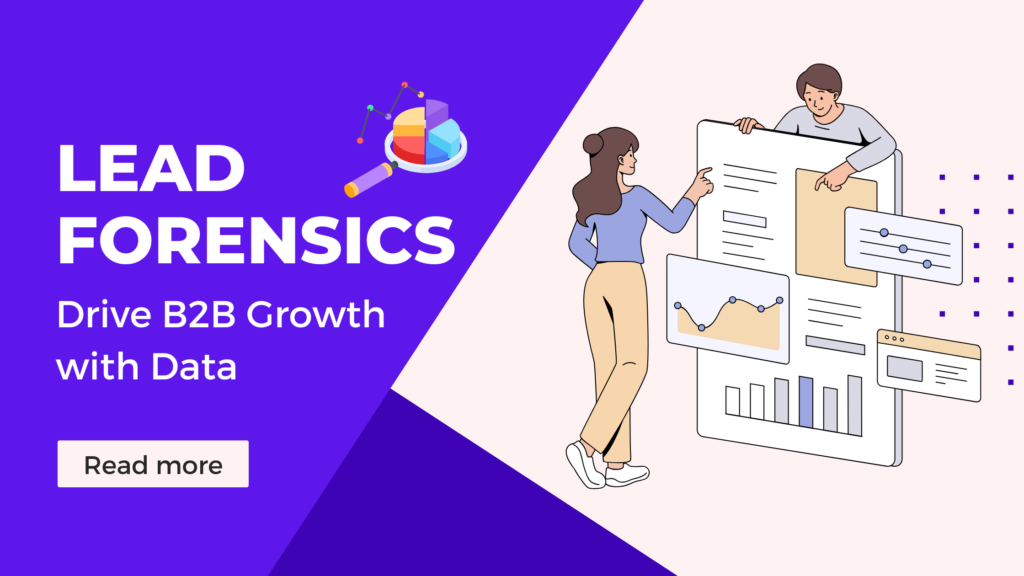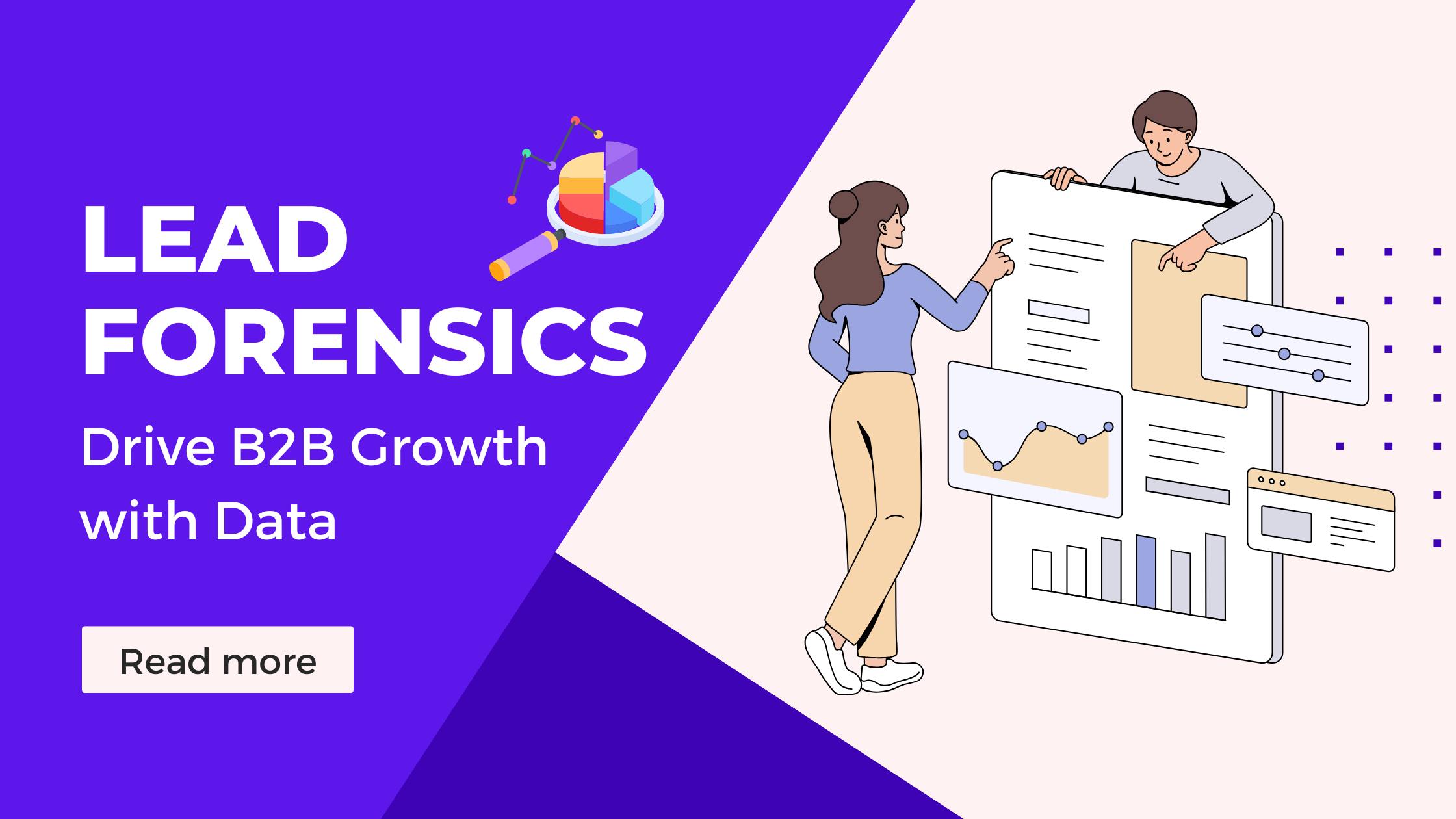Table of Contents
ToggleIntroduction to Lead Forensics
In today’s digital world, businesses receive countless website visitors daily, but most of them leave without taking action. This is where Lead Forensics comes in—it helps B2B companies uncover hidden opportunities by identifying and tracking anonymous website visitors. By revealing company names, contact details, and browsing behavior, Lead Forensics empowers sales and marketing teams with actionable insights to turn website traffic into potential customers.
For B2B businesses, lead generation is crucial, but relying solely on traditional methods can be limiting. Lead Forensics bridges this gap by converting website visits into warm leads, reducing guesswork and enabling data-driven sales strategies. Instead of waiting for prospects to fill out forms, businesses can proactively engage with high-intent visitors, boosting conversions and sales efficiency.
What is Lead Forensics?
- A visitor tracking tool that identifies businesses visiting your website.
- Provides key company details, such as name, industry, size, and contact information.
- Delivers real-time insights, allowing sales teams to engage prospects at the right moment.
By using advanced IP tracking technology, Lead Forensics reveals the identity of anonymous visitors who don’t fill out contact forms. This means businesses no longer lose potential leads just because a visitor didn’t take action.
Why It Matters for B2B Businesses
- Uncovers hidden sales opportunities by tracking high-intent website visitors.
- Improves lead qualification by providing detailed company insights.
- Strengthens marketing ROI through data-driven engagement strategies.
B2B businesses thrive on targeted lead generation and relationship-building, both of which are enhanced by Lead Forensics. By understanding who is visiting their website, companies can personalize outreach, shorten sales cycles, and maximize their digital marketing efforts.
How Lead Forensics Works
Lead Forensics operates by tracking and identifying website visitors, transforming anonymous traffic into actionable business insights. Most website visitors leave without filling out a contact form, making it difficult for businesses to follow up. Lead Forensics eliminates this problem by using advanced IP tracking technology to reveal the companies visiting your site, providing their details, and allowing businesses to engage potential customers at the right time.
With this tool, businesses can go beyond basic website analytics. Instead of just seeing numbers and page views, sales and marketing teams gain access to specific business details, including company names, contact information, and browsing behavior. This data-driven approach helps businesses proactively engage warm leads, boosting conversions and improving sales efficiency.
Tracking Website Visitors
- Identifies anonymous visitors using IP tracking technology.
- Provides company details, including name, industry, and location.
- Monitors browsing behavior to understand interest levels.
By tracking website visitors, businesses gain real-time insights into which companies are showing interest in their products or services. This allows them to prioritize high-value prospects and reach out with personalized messaging.
Identifying Potential Leads
- Filters visitors based on engagement level and relevance.
- Scores leads to help sales teams focus on high-converting prospects.
- Provides key decision-maker details for direct outreach.
Not all website visitors are potential customers. Lead Forensics helps businesses identify and qualify leads by analyzing visitor behavior, ensuring that sales teams focus on the most promising opportunities.
Data-Driven Sales Strategies
- Enables proactive engagement with warm leads.
- Helps personalize outreach based on visitor interests.
- Enhances marketing strategies by refining audience targeting.
By leveraging data from Lead Forensics, businesses can tailor their sales approach, reaching out to prospects with the right message at the right time. This not only improves lead conversion rates but also strengthens the overall sales and marketing alignment.
Key Features of Lead Forensics
Lead Forensics is designed to help B2B businesses turn website traffic into actionable sales opportunities. By providing real-time visitor tracking, detailed insights, and seamless integrations, it empowers businesses to engage high-value prospects efficiently. Instead of waiting for potential customers to fill out forms, companies can proactively connect with visitors who are already interested in their products or services.
With intelligent lead tracking and data-rich insights, Lead Forensics ensures that businesses never miss an opportunity. The platform offers real-time updates, helping sales teams respond quickly while prospects are still engaged. Additionally, its seamless integration with CRM and marketing tools ensures that businesses can efficiently manage and nurture leads within their existing workflows.
Real-Time Lead Tracking
- Identifies website visitors instantly, even if they don’t fill out forms.
- Provides live notifications, ensuring timely engagement.
- Tracks browsing behavior, revealing pages viewed and time spent.
With real-time tracking, businesses can reach out to potential leads while their interest is high. This proactive approach significantly increases conversion rates by allowing sales teams to respond at the perfect moment.
Detailed Business Insights
- Displays company name, size, location, and industry.
- Provides key decision-maker contact details for direct outreach.
- Analyzes visitor behavior to determine lead quality.
By offering deep business insights, Lead Forensics helps businesses prioritize high-value prospects. This ensures sales teams focus on leads most likely to convert, making the sales process more efficient.
CRM & Marketing Tool Integration
- Seamlessly connects with CRMs like Salesforce, HubSpot, and Zoho.
- Syncs visitor data to streamline sales and marketing efforts.
- Enhances automation, reducing manual data entry.
Integration with existing business tools ensures that lead data is effectively utilized. This allows teams to automate workflows, nurture prospects, and maintain a well-organized sales pipeline.
Lead Forensics Pricing Plans
Lead Forensics offers flexible pricing plans tailored to different business needs. Since it provides a premium lead generation service, pricing is customized based on factors like website traffic, required features, and business size. Instead of a fixed pricing model, Lead Forensics follows a quote-based approach, ensuring businesses only pay for the services they truly need.
By offering scalable pricing, Lead Forensics makes it easier for businesses to find a plan that aligns with their goals. Whether you’re a small B2B company looking for basic lead tracking or a large enterprise needing advanced analytics and integrations, there’s a suitable package. Understanding the pricing structure helps businesses make informed decisions and maximize their return on investment.
Overview of Pricing Packages
- Custom pricing model based on website traffic and business size.
- Scalable plans designed to meet small, mid-sized, and large business needs.
- Personalized quotes instead of fixed monthly or annual fees.
Since pricing is tailored, businesses must request a quote to get an exact cost. This ensures they only pay for features they need without unnecessary expenses.
Features Included in Each Plan
- Real-time visitor tracking and company identification.
- Lead qualification tools to prioritize high-converting prospects.
- CRM & marketing tool integration for seamless data management.
Each plan includes core features like lead tracking and insights, but advanced packages offer additional benefits such as automation tools, API access, and in-depth analytics for larger businesses.
Choosing the Right Plan for Your Business
- Assess your website traffic to determine your data needs.
- Consider CRM and automation requirements for seamless workflow.
- Compare features to select the most cost-effective option.
To make the most of Lead Forensics, businesses should align their choice with their lead generation strategy. Small businesses might benefit from basic tracking, while enterprises may need advanced analytics and multi-user access.
Benefits of Using Lead Forensics
Lead Forensics provides businesses with a powerful way to turn website visitors into potential leads, helping sales teams engage prospects before they move on to competitors. By identifying anonymous visitors and providing key details like company name, contact information, and browsing behavior, businesses can proactively reach out to high-intent leads, increasing their chances of conversion.
Beyond lead generation, Lead Forensics enhances sales and marketing efficiency, ensuring teams work with the right data at the right time. With better lead qualification, real-time insights, and seamless CRM integration, businesses can improve their sales pipeline, shorten deal cycles, and maximize the return on marketing investments.
Increased Conversion Rates
- Identifies warm leads, reducing reliance on cold outreach.
- Provides real-time visitor data for timely follow-ups.
- Helps personalize engagement, increasing response rates.
By allowing sales teams to engage with interested prospects while they are still in research mode, Lead Forensics boosts conversion rates and ensures fewer high-potential leads slip through the cracks.
Improved Sales & Marketing Alignment
- Bridges the gap between sales and marketing teams.
- Delivers actionable insights, helping refine marketing campaigns.
- Improves lead handoff, ensuring sales teams get high-quality prospects.
With better data-sharing and collaboration, marketing teams can fine-tune their strategies while sales teams can focus on qualified, high-intent leads, improving efficiency and closing more deals.
Better ROI on Marketing Efforts
- Tracks visitor engagement, showing which campaigns drive traffic.
- Eliminates guesswork, ensuring resources are used effectively.
- Optimizes ad spend, targeting the right audience.
Since Lead Forensics provides clear insights into visitor behavior, businesses can allocate marketing budgets more effectively, focusing on strategies that bring real revenue growth rather than relying on assumptions.
How to Maximize Lead Forensics for B2B Success
To fully leverage Lead Forensics, businesses must go beyond just identifying website visitors. The key to success lies in effective lead nurturing, strong sales and marketing alignment, and data-driven decision-making. By taking a strategic approach, businesses can turn website visitors into engaged prospects, improve conversion rates, and drive sustainable growth.
Using real-time insights, personalized engagement, and seamless integrations, companies can streamline their lead management process. With the right strategies in place, Lead Forensics can enhance sales efficiency, optimize marketing efforts, and help businesses close more deals faster.
Best Practices for Lead Nurturing
- Engage leads promptly to capitalize on interest.
- Use personalized outreach, based on visitor behavior.
- Implement a multi-touch approach, including emails, calls, and social connections.
By nurturing leads effectively, businesses increase the chances of conversion. Timely follow-ups and personalized interactions help build trust and keep prospects engaged throughout the buyer journey.
Aligning Sales and Marketing Teams
- Ensure seamless communication between sales and marketing teams.
- Use shared data to refine lead qualification criteria.
- Develop a structured lead handoff process for better efficiency.
Aligning both teams ensures high-quality leads are passed from marketing to sales at the right time. When sales teams act on well-qualified leads, conversion rates improve, and marketing efforts become more effective.
Leveraging Analytics for Growth
- Analyze visitor data to identify trends and opportunities.
- Refine marketing strategies based on real-time insights.
- Use performance metrics to optimize outreach and engagement.
By leveraging analytics, businesses can make data-driven decisions that improve marketing campaigns, optimize sales outreach, and drive long-term revenue growth.
Lead Forensics vs. Other Lead Generation Tools
When it comes to B2B lead generation, businesses have multiple tools at their disposal. However, Lead Forensics stands out by identifying anonymous website visitors, giving sales teams real-time insights into potential leads. Unlike traditional lead generation tools that rely on form submissions or paid ads, Lead Forensics uncovers hidden opportunities by tracking visitor activity and providing contact details for outreach.
Many lead generation tools focus on collecting leads through gated content or cold outreach. While these methods work, they can be time-consuming and inefficient. Lead Forensics eliminates the guesswork by giving businesses direct access to companies already showing interest in their services, allowing for proactive engagement and faster conversions.
Unique Advantages
- Identifies website visitors, even if they don’t fill out a form.
- Provides real-time lead data, helping businesses engage prospects instantly.
- Integrates seamlessly with CRMs, ensuring smooth lead management.
With these advantages, businesses can shorten sales cycles and improve conversion rates by focusing on leads who are actively searching for their solutions.
Comparison with Alternative Solutions
- Traditional lead gen tools rely on forms and gated content, while Lead Forensics identifies visitors automatically.
- Cold outreach strategies require extensive research, whereas Lead Forensics provides ready-to-contact business details.
- Advertising-based tools generate leads but often at a high cost, while Lead Forensics helps businesses convert organic traffic.
By offering instant lead identification and actionable insights, Lead Forensics provides a more efficient and cost-effective approach to B2B lead generation, helping businesses engage the right prospects at the right time.
Common Mistakes to Avoid
While Lead Forensics is a powerful tool for B2B lead generation, its effectiveness depends on how businesses utilize the data. Many companies fail to fully leverage its potential by misinterpreting data, neglecting lead qualification, or lacking a structured follow-up strategy. These mistakes can lead to wasted opportunities and lower conversion rates.
To maximize results, businesses must focus on understanding visitor insights correctly, qualifying leads efficiently, and ensuring timely follow-ups. Avoiding these common pitfalls ensures that the tool delivers higher engagement, better conversions, and a stronger sales pipeline.
Misinterpreting Data
- Assuming all visitors are ready to buy, instead of analyzing intent.
- Not segmenting leads properly, leading to ineffective outreach.
- Overlooking browsing behavior, which provides key insights into interest levels.
Businesses must analyze visitor behavior, time spent on key pages, and engagement patterns to accurately assess a lead’s interest before making a sales approach.
Ignoring Lead Qualification
- Not prioritizing high-value leads, leading to wasted time on low-potential prospects.
- Failing to align leads with the ideal customer profile (ICP).
- Lack of scoring system, making it harder to determine lead readiness.
Effective lead qualification ensures that sales teams focus on the most promising prospects, increasing efficiency and conversion rates while reducing wasted efforts.
Lack of Follow-Up Strategy
- Not reaching out quickly, causing leads to lose interest.
- Using generic outreach, instead of personalizing based on visitor behavior.
- Not leveraging multiple touchpoints, such as email, calls, and LinkedIn.
A structured follow-up plan keeps leads engaged and nurtures relationships, helping businesses close deals faster by maintaining consistent and relevant communication.
Getting Started with Lead Forensics
Implementing Lead Forensics is a game-changer for businesses looking to convert website traffic into real sales opportunities. However, to fully utilize its capabilities, businesses must ensure a smooth setup, integration, and strategic use of the tool. By following a structured implementation plan, companies can quickly start tracking visitors, qualifying leads, and improving sales efficiency.
A successful start with Lead Forensics involves proper team onboarding, seamless CRM integration, and an actionable strategy for outreach. The key is to make sure that sales and marketing teams understand how to use visitor insights effectively. With the right approach, businesses can maximize their return on investment from day one.
Implementation Guide
- Set up tracking by adding Lead Forensics code to your website.
- Define lead qualification criteria to filter out low-value visitors.
- Train sales and marketing teams to interpret and act on data effectively.
Proper implementation ensures that businesses can instantly start identifying website visitors and reaching out to high-potential leads with a structured approach.
Tips for Seamless Integration
- Sync with CRM tools like Salesforce, HubSpot, or Zoho for easy lead management.
- Automate lead assignments to ensure quick follow-ups.
- Use analytics dashboards to track performance and optimize strategies.
By integrating Lead Forensics into existing workflows, businesses streamline operations, reduce manual work, and improve lead conversion rates, making the entire process more efficient and result-driven.
Conclusion
Lead Forensics is a powerful tool that enables B2B businesses to unlock hidden sales opportunities by identifying anonymous website visitors. By providing real-time insights, detailed company data, and seamless CRM integration, it helps businesses take a proactive approach to lead generation and sales engagement. When used effectively, it can significantly boost conversion rates, improve marketing efficiency, and drive higher ROI.
To get the most out of Lead Forensics, businesses need to implement best practices, align sales and marketing efforts, and use data-driven strategies. Avoiding common mistakes like misinterpreting data or neglecting follow-ups ensures that businesses can fully capitalize on the potential of this tool.
Final Thoughts
- Lead Forensics transforms website traffic into actionable business opportunities.
- Helps businesses engage high-intent leads before they move to competitors.
- Optimizes sales and marketing alignment for improved efficiency.
By leveraging real-time visitor tracking and intelligent lead management, businesses can gain a competitive edge and ensure no potential lead goes unnoticed.
Next Steps for Your Business
- Start with a free demo to explore how Lead Forensics fits your needs.
- Train your sales and marketing teams on using visitor insights effectively.
- Refine your lead generation strategy to maximize conversions.
Implementing Lead Forensics the right way ensures long-term success by helping businesses turn website visitors into loyal customers and revenue-generating opportunities.
You can also read about SEO Specialist: Role, Skills, and How to Become One.
Lead Forensics FAQs
What do Lead Forensics do?
Lead Forensics identifies anonymous website visitors and provides businesses with their company details, contact information, and browsing behavior. This helps sales teams engage potential leads and convert them into customers.
Is Lead Forensics legal?
Yes, Lead Forensics is fully legal and complies with GDPR and other data protection laws. It collects business-related data rather than personal data, ensuring ethical lead generation.
What is the Lead Forensics code?
The Lead Forensics tracking code is a small snippet of code added to a website. It helps track visitor IP addresses, identify businesses, and provide insights into their activity on the site.
How much do lead forensic scientists make?
Lead forensic scientists in the U.S. earn an average salary of $50,000 to $85,000 per year, depending on experience and location. In the UK, salaries range from £25,000 to £50,000 annually.
How big is Lead Forensics?
Lead Forensics is a global company with thousands of customers worldwide. It serves B2B businesses across various industries, helping them generate and convert high-quality leads.
Is lead illegal in the UK?
Lead is restricted but not completely illegal in the UK. Certain uses, such as in paint, fuel, and ammunition, are heavily regulated, but lead is still used in some industries under strict guidelines.




